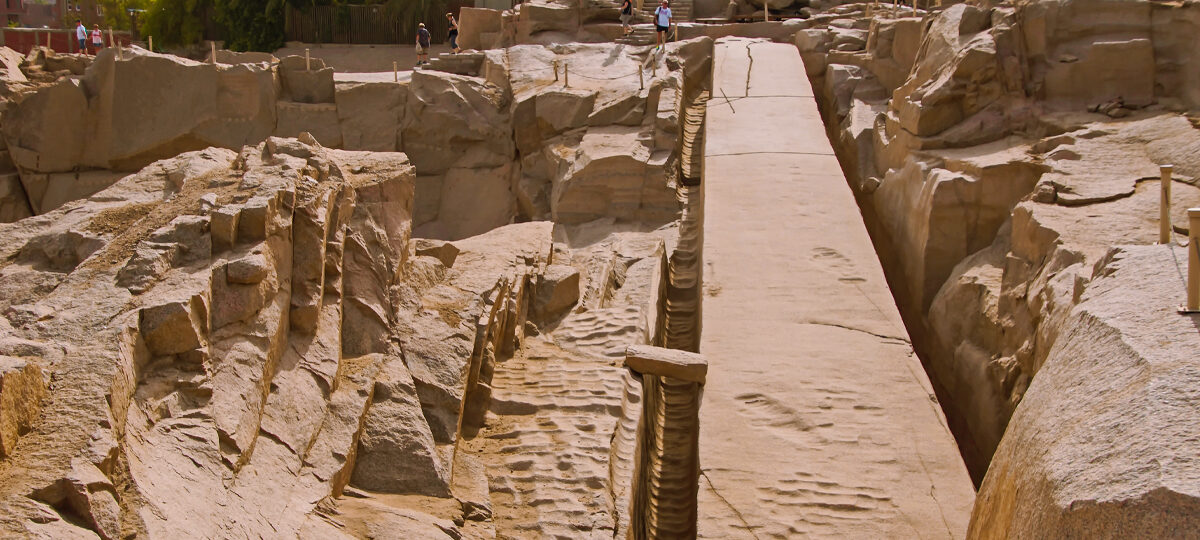Unfinished Obelisk
At a granite quarry south of Aswan, a huge New Kingdom obelisk was left unfinished. If it had been finished, it would have stood 134 feet tall and weighed 1,197 kg (1.8 million pounds). Before a fault was found, three sides of the shaft had to be dug out. The obelisk was only partially separated from the rock it was made from. Between the 8th and 12th centuries, mudbricks were used to build several hundred Islamic tombs at the Fatimid cemetery to the west of the quarry.
A crack in the granite made it impossible to finish this Egyptian obelisk. It is hidden about two kilometres south of Syene in a huge pink granite quarry. Even though it is in bad shape, it is still attached to the rock mass (Aswan). Since ancient times, granite, schist, and alabaster have been taken out of the ground to be used as building materials. The blocks were moved north by the Nile River.
Obelisks in Rome, New York, Istanbul, Paris, and London were made from Aswan granite, which is only found in this part of Egypt. The valuable pink granite for the obelisks came from the same quarry as the stone blocks for the pyramids, sculptures, and regal colossuses. This quarry is only a few kilometres south of Aswan.
Cutting tools and how to use them:

This huge obelisk shows how the granite mountain was cut to make these monuments. Workers probably didn’t take the rock out of the ground because it was broken in some way. The huge grooves on the sides aren’t finished, which shows that the rock was hit with percussion (maybe with hammers or dolerite balls) instead of notches and water-swollen wooden wedges or even metal wedges, as was common in Roman times.
First, a smooth, even piece of granite without any cracks was chosen. Then, the surface was evened out with hot bricks that were quickly cooled in a bucket of water. The granite was then pounded very hard with dolerite balls. Many of these balls were found naturally formed in the valleys east and west of the river. Most of the time, these balls are 15 to 30 cm in diameter and weigh 5 kg.
Using a method similar to that of a “lady” or “goose,” these stone tools were used by carefully pounding them vertically over and over, then quickly lifting them up and letting go. The result is large, circular grooves that look like they were “nibbled” with an unusual tool.
The Museum of the Unfinished Obelisk is located here.

The area around the unfinished obelisk in Aswan is now a museum that anyone can visit. In the 25th year of his rule, Thutmosis III ordered two obelisks for the Temple of Karnak, one of which is now in Rome and the other of which is still at the temple.

